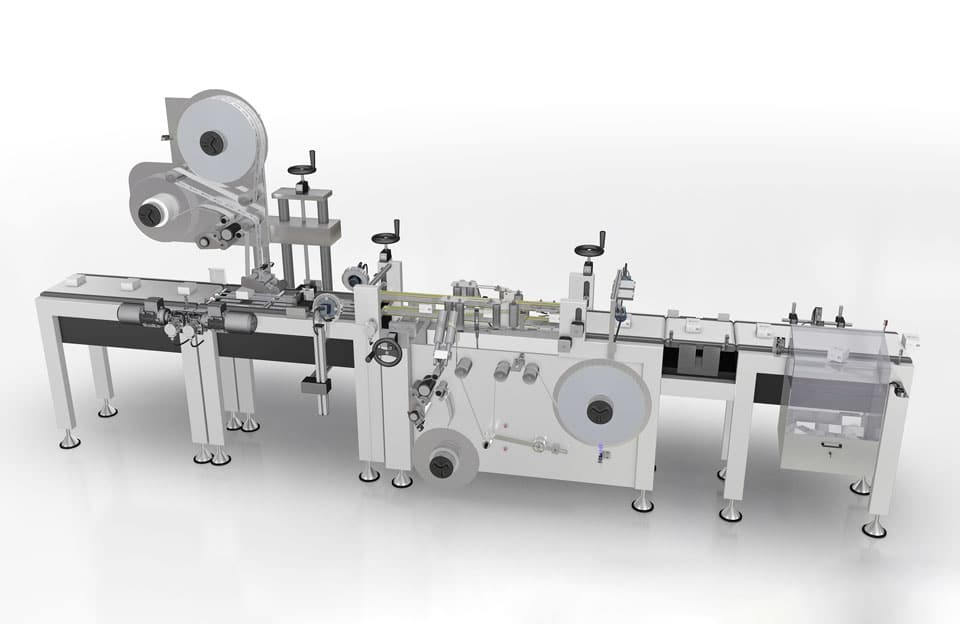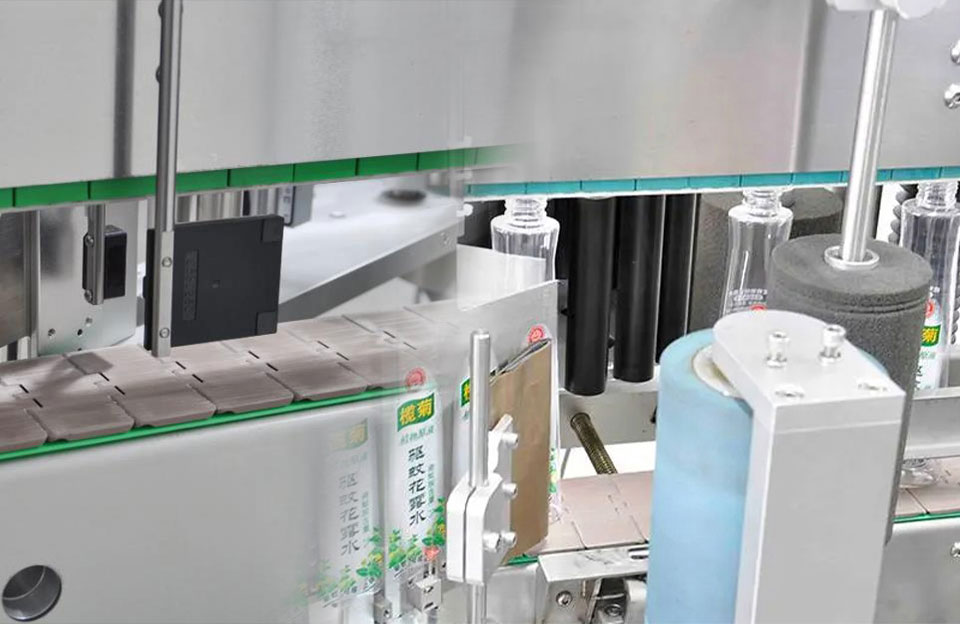An automatic labeling machine, also known as a label applicator or labeling system, is a device used to apply labels onto various products, containers, or packages in an automated manner. It is commonly used in food and beverage, pharmaceuticals, cosmetics, manufacturing, and logistics industries. The main purpose of an automatic labeling machine is to streamline and automate the labeling process, increasing efficiency, accuracy, and productivity.
The Structure of the Automatic Labeling Machine
- Conveyor System: It is used to transport the products or containers to be labeled. Depending on the application’s requirements, the conveyor can be a belt, roller, or other type.
- Label Supply: It holds and dispenses the labels. This system may include a label roll holder, unwind mechanism, and tension control to ensure smooth and consistent label feeding.
- Labeling Head: The labeling head is the main component responsible for applying the labels to the products. It typically consists of a label applicator, which can be a wipe-on, blow-on, tamp-on, or other mechanism, depending on the label type and application requirements. The labeling head may also include sensors or detectors to ensure accurate label placement.
- Control System: It manages the overall operation. This system includes electronic controls, programmable logic controllers (PLCs), and human-machine interface (HMI) panels for setting up parameters, controlling label placement, adjusting speeds, and monitoring the labeling process.
- Product Detection System: Automatic labeling machines often incorporate product detection systems to ensure proper label placement. These systems use sensors or vision systems to detect the presence and position of the products on the conveyor, allowing the labeling head to apply the labels accurately.
- Adjustability Mechanisms: Automatic labeling machines often offer adjustability features for different product sizes and label dimensions. These mechanisms may include adjustable conveyor heights, labeling head positions, label dispensing speed, and other parameters.
- Optional Accessories: Depending on the specific application, automatic labeling machines may include additional features or accessories. These can include printers for adding variable information to labels (such as barcodes or expiry dates), label coders, label inspection systems, reject mechanisms for faulty products, and integration with other production line equipment.
The Working Process of Automatic Labeling Machine
- Product Feeding: The labeling process begins with feeding products or containers into the labeling machine. The products are conveyed on a conveyor belt or guided by mechanical guides to ensure proper alignment.
- Label Roll Setup: The labeling machine has a label roll or reel with a continuous strip of labels. The label roll is loaded onto the machine, and the leading edge of the label web is threaded through the machine’s label applicator system.
- Label Dispensing: The label dispensing mechanism consists of a peel plate or vacuum drum that separates individual labels from the continuous strip. As the product moves through the machine, the label dispenser releases a single label at the appropriate time.
- Label Application: Once a label is dispensed, the labeling machine applies it to the product or packaging. Different types of labeling mechanisms can be used, depending on the application. Common methods include:
1. Pressure-Sensitive Labels: For pressure-sensitive labels, a labeling head or applicator applies the label onto the product’s surface by using a combination of pressure and a smooth, flat pad. The label is pressed onto the product, adhering it firmly in place.
2. Sleeve Labels: Sleeve labels are applied by a heat-shrink labeling system. The machine uses heat to shrink the label around the product, conforming to its shape.
3. Wraparound Labels: Wraparound labels are commonly used for bottles or cylindrical containers. The labeling machine wraps the label around the product, aligning it properly and ensuring a secure fit. - Label Adhesion: The labeling machine ensures proper adhesion by pressing or rolling the label onto the product’s surface after applying the label. This step ensures the label adheres firmly and avoids wrinkles or bubbles.
- Quality Control: Quality control mechanisms aim to ensure accurate label placement and prevent errors. These can include sensors, cameras, or vision systems that inspect the label’s position, orientation, and integrity. If a labeling error is detected, the machine can trigger an alarm, stop the process, or automatically correct the error.
- Product Discharge: The labeled product discharges from the machine once the label is applied and inspected. It can be collected in containers, conveyed to the next stage of the packaging line, or prepared for shipping.
Conclusion
Automatic labeling machines can improve the attachment efficiency of product labeling with accurate attachment position, good quality, and high stability. It can avoid a series of problems, such as low efficiency of manual labeling, skewed attachment, uneven thickness of glue and wrinkles, etc. In short, it can reduce the labor cost of labeling, improve the aesthetics of product identification, and enhance the overall competitiveness of products.


